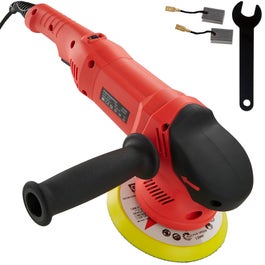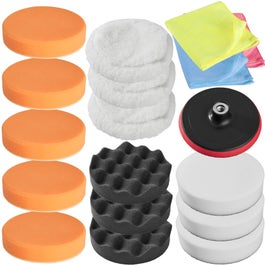Polishing machines and supplies for gleaming results
If you want to return that professional high-gloss finish to your car’s paint job, you’ll need a polisher and the right polishing accessories such as disc sanders and grinders. Car polishing machines are electrically powered tools with a rotating polishing disc mounted on the end. A polishing set usually includes a hard felt polishing wheel and a softer buffing wheel. The latter is designed to apply the polishing wax as it rotates. This makes the surface so shiny you can use it as a mirror. Further benefit: treating metal with a polisher also protects it from rust. Flexible oscillating wheels or bands are generally used on rotary polishers for DIY projects. Alternatively, you can also get polishing add-ons and adapters for drills.
Perfect for beginners: the eccentric polisher
Eccentric polishing machines don’t have any positive drive. Only the plate to which the pad is secured actually moves. This makes the eccentric polishing machine especially user friendly, which in turn lets beginners learn the art of polishing easily.
Polishing made easy
Apply a small amount of polish onto the surface and choose a suitable speed on your polisher - a low speed is generally enough to begin with. To avoid splashback, you should always position the machine on the metal before turning it on. Distribute the polish gently to begin with, applying no pressure, always holding the polisher straight. Your pad should always overlap the already polished surface by up to a half. Slowly increase pressure and speed to optimally work the polish into the metal. Towards the end of the polishing process, begin decreasing your speed and pressure again. One more tip: only remove the polisher from the metal once the rotations have come to a complete stop. You will find a wide selection of quality polishing equipment in our online shop. We’d be happy to help you with any questions you might have.







